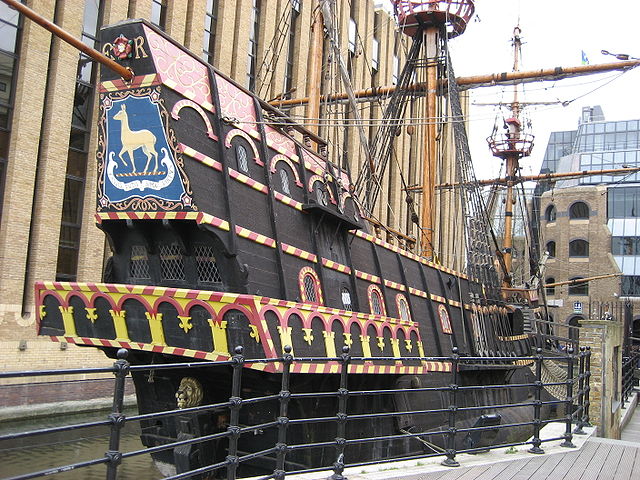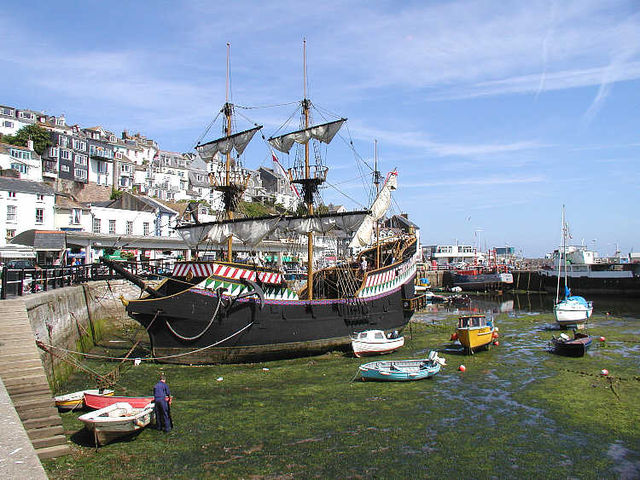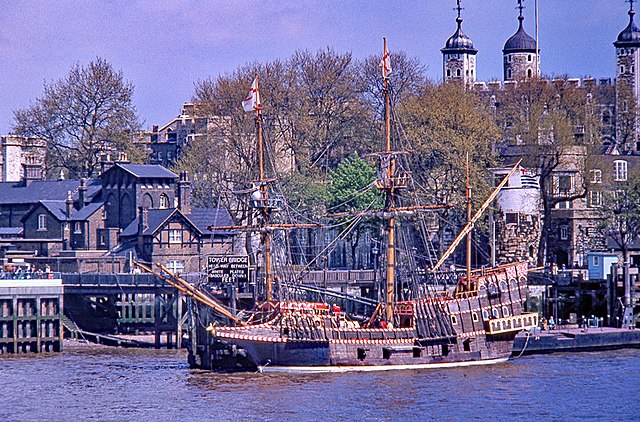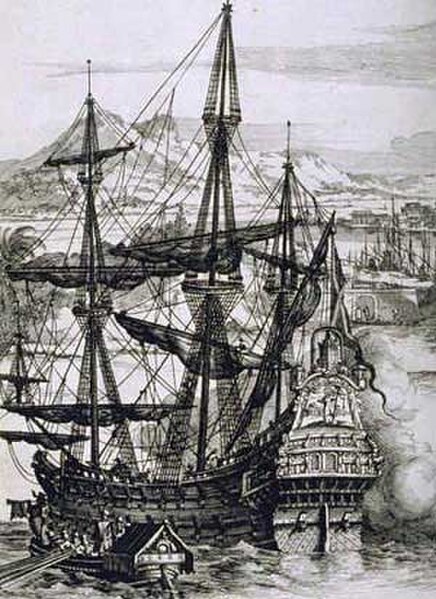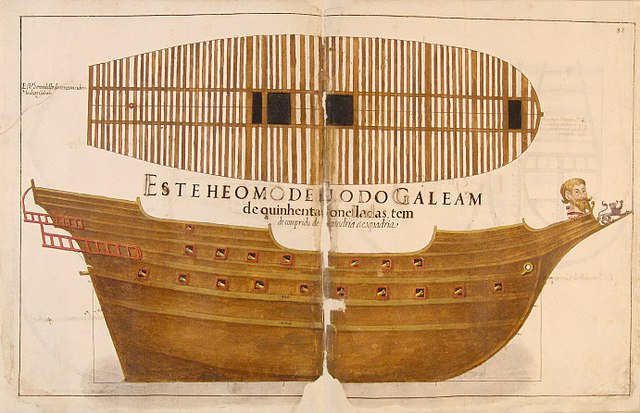Golden Hind was a galleon captained by Francis Drake in his circumnavigation of the world between 1577 and 1580. She was originally known as Pelican, but Drake renamed her mid-voyage in 1578, in honour of his patron, Sir Christopher Hatton, whose crest was a golden hind. Hatton was one of the principal sponsors of Drake's world voyage. A full-sized, seaworthy reconstruction is in London, on the south bank of the Thames.
Golden Hinde, a sea-worthy reconstruction of the original vessel
The first replica in Brixham, 1968
The second replica in Brixham, 2003
Golden Hinde replica moored at Tower Pier in 1974, before her transatlantic voyage.
Galleons were large, multi-decked sailing ships developed in Portugal and Spain and first used as armed cargo carriers by Europeans from the 16th to 18th centuries during the age of sail and were the principal vessels drafted for use as warships until the Anglo-Dutch Wars of the mid-1600s. Galleons generally carried three or more masts with a lateen fore-and-aft rig on the rear masts, were carvel built with a prominent squared off raised stern, and used square-rigged sail plans on their fore-mast and main-masts.
A Spanish galleon (left) firing its cannons at a Dutch warship (right). Cornelis Verbeeck, c. 1618–1620
A Spanish galleon
Technical drawing of a late 16th century or early 17th century Portuguese galleon, featured in the Livro de Traças de Carpintaria
Model of an English galleon sporting four mast types: (left to right) • Bonaventure mizzenmast, typically lateen-rigged and shorter than the main mizzen. • Mizzenmast, typically shorter than the foremast and lateen-rigged. • Mainmast, the tallest mast and, on vessels with more than three masts, the most centrally located. • Foremast, the second-tallest mast.

